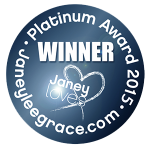Coprococcus is a group of beneficial gut bacteria that play a crucial role in promoting human health. The clinical literature on Coprococcus is extensive and provides clear examples of how Coprococcus support health in the gut and beyond.
Roles of Coprococcus species in human health
- Production of butyrate: Coprococcus is one of the main contributors to the production of butyrate, a short-chain fatty acid that serves as an energy source for colon cells and fosters their well-being and proper function.1Rivière A, Selak M, Lantin D, Leroy F, De Vuyst L. Bifidobacteria and Butyrate-Producing Colon Bacteria: Importance and Strategies for Their Stimulation in the Human Gut. Front Microbiol. 2016 Jun 28;7:979. doi: 10.3389/fmicb.2016.00979.
- Anti-inflammatory effects: By producing butyrate, Coprococcus helps regulate the immune system, alleviating excessive inflammation in both the gut and throughout the entire body.2Deleu S, Machiels K, Raes J, Verbeke K, Vermeire S. Short chain fatty acids and its producing organisms: An overlooked therapy for IBD? EBioMedicine. 2021 Apr;66:103293. doi: 10.1016/j.ebiom.2021.103293.
- Supporting gut barrier function: Coprococcus, through its production of butyrate, assists in preserving the integrity of the gut lining, which helps prevent harmful substances and pathogens from entering the bloodstream and enhances overall gut health.3Seo B, Jeon K, Moon S, Lee K, Kim WK, Jeong H, Cha KH, Lim MY, Kang W, Kweon MN, Sung J, Kim W, Park JH, Ko G. Roseburia spp. Abundance Associates with Alcohol Consumption in Humans and Its Administration Ameliorates Alcoholic Fatty Liver in Mice. Cell Host Microbe. 2020 Jan 8;27(1):25-40.e6. doi: 10.1016/j.chom.2019.11.001.
- Suppressing harmful bacteria: Coprococcus may contribute to limiting the growth of detrimental bacteria in the gut, thus avoiding their overpopulation and the health problems associated with it.4Walsh, C.J., Guinane, C.M., Hill, C. et al. In silico identification of bacteriocin gene clusters in the gastrointestinal tract, based on the Human Microbiome Project’s reference genome database. BMC Microbiol 15, 183 (2015). doi: 10.1186/s12866-015-0515-4
- A marker of good health: Abundant levels of Coprococcus have been associated with a lower risk of developing various health issues, such as inflammatory bowel disease (IBD) and irritable bowel syndrome (IBS), indicating its significance in maintaining a healthy gut and lowering the risk of these conditions.5Cui, J., Ramesh, G., Wu, M., Jensen, E. T., Crago, O., Bertoni, A. G., Goodarzi, M. O. (2022). Butyrate-Producing Bacteria and Insulin Homeostasis: The Microbiome and Insulin Longitudinal Evaluation Study (MILES). Diabetes, 71(11), 2438-2446. doi: 10.2337/db22-01686Ruan G, Chen M, Chen L, Xu F, Xiao Z, Yi A, Tian Y, Ping Y, Lv L, Cheng Y, Wei Y. Roseburia intestinalis and Its Metabolite Butyrate Inhibit Colitis and Upregulate TLR5 through the SP3 Signaling Pathway. Nutrients. 2022 Jul 25;14(15):3041. doi: 10.3390/nu14153041.
What are the best sources of Coprococcus?
Coprococcus is a native microbe of the human gut. There are no food sources or supplements available at present. However, you can improve the abundance of Coprococcus in your gut by eating some of this microbe’s favourite foods. Please see below.
What foods can Coprococcus feed on?
Coprococcus species are really versatile and can feed on a range of different fibres. As an example, Coprococcus thrives on insoluble fibre. Foods rich in insoluble fibre include whole grains (such as brown rice, quinoa, and barley), vegetables (like broccoli, carrots, and Brussels sprouts), and fruits (such as apples, pears, and berries). Coprococcus also feeds on resistant starch. Foods high in resistant starch include green bananas, cooked and cooled potatoes, all varieties of lentils, beans, and chickpeas, and whole grains like oats and barley. Coprococcus can also feed on oligosaccharides found in foods such as onions, garlic, leeks, asparagus, and artichokes. And last but not least, certain polyphenol-rich foods, such as berries, grapes, green tea, and cocoa, can also provide a source of energy for Coprococcus. Including these foods in your diet can help provide the necessary sources of energy to support the growth and metabolism of Coprococcus and to contribute to a healthy and balanced gut microbiome.7Latorre-Pérez A, Hernández M, Iglesias JR, Morán J, Pascual J, Porcar M, Vilanova C, Collado L. The Spanish gut microbiome reveals links between microorganisms and Mediterranean diet. Sci Rep. 2021 Nov 10;11(1):21602. doi: 10.1038/s41598-021-01002-1.8Nagpal R, Shively CA, Register TC, Craft S, Yadav H. Gut microbiome-Mediterranean diet interactions in improving host health. F1000Res. 2019 May 21;8:699. doi: 10.12688/f1000research.18992.1.
Where to find Coprococcus in the Chuckling Goat Gut Microbiome Test
You will find your Coprococcus score in the “butyrate producers” section of the “Probiotics” report in your Chuckling Goat Gut Microbiome Test results.
Synonyms: Coprococcus species
Important disclaimer
The Chuckling Goat Gut Microbiome Handbook is an educational resource built to translate complex science into plain English. The information provided on this page is not intended to be a substitute for professional medical advice, diagnosis, or treatment. Always seek the advice of your GP or other qualified health provider with any questions you may have regarding a medical condition. Always check with your GP for interactions with medications/health conditions before changing your diet or starting to take food supplements.
References
- 1Rivière A, Selak M, Lantin D, Leroy F, De Vuyst L. Bifidobacteria and Butyrate-Producing Colon Bacteria: Importance and Strategies for Their Stimulation in the Human Gut. Front Microbiol. 2016 Jun 28;7:979. doi: 10.3389/fmicb.2016.00979.
- 2Deleu S, Machiels K, Raes J, Verbeke K, Vermeire S. Short chain fatty acids and its producing organisms: An overlooked therapy for IBD? EBioMedicine. 2021 Apr;66:103293. doi: 10.1016/j.ebiom.2021.103293.
- 3Seo B, Jeon K, Moon S, Lee K, Kim WK, Jeong H, Cha KH, Lim MY, Kang W, Kweon MN, Sung J, Kim W, Park JH, Ko G. Roseburia spp. Abundance Associates with Alcohol Consumption in Humans and Its Administration Ameliorates Alcoholic Fatty Liver in Mice. Cell Host Microbe. 2020 Jan 8;27(1):25-40.e6. doi: 10.1016/j.chom.2019.11.001.
- 4Walsh, C.J., Guinane, C.M., Hill, C. et al. In silico identification of bacteriocin gene clusters in the gastrointestinal tract, based on the Human Microbiome Project’s reference genome database. BMC Microbiol 15, 183 (2015). doi: 10.1186/s12866-015-0515-4
- 5Cui, J., Ramesh, G., Wu, M., Jensen, E. T., Crago, O., Bertoni, A. G., Goodarzi, M. O. (2022). Butyrate-Producing Bacteria and Insulin Homeostasis: The Microbiome and Insulin Longitudinal Evaluation Study (MILES). Diabetes, 71(11), 2438-2446. doi: 10.2337/db22-0168
- 6Ruan G, Chen M, Chen L, Xu F, Xiao Z, Yi A, Tian Y, Ping Y, Lv L, Cheng Y, Wei Y. Roseburia intestinalis and Its Metabolite Butyrate Inhibit Colitis and Upregulate TLR5 through the SP3 Signaling Pathway. Nutrients. 2022 Jul 25;14(15):3041. doi: 10.3390/nu14153041.
- 7Latorre-Pérez A, Hernández M, Iglesias JR, Morán J, Pascual J, Porcar M, Vilanova C, Collado L. The Spanish gut microbiome reveals links between microorganisms and Mediterranean diet. Sci Rep. 2021 Nov 10;11(1):21602. doi: 10.1038/s41598-021-01002-1.
- 8Nagpal R, Shively CA, Register TC, Craft S, Yadav H. Gut microbiome-Mediterranean diet interactions in improving host health. F1000Res. 2019 May 21;8:699. doi: 10.12688/f1000research.18992.1.














